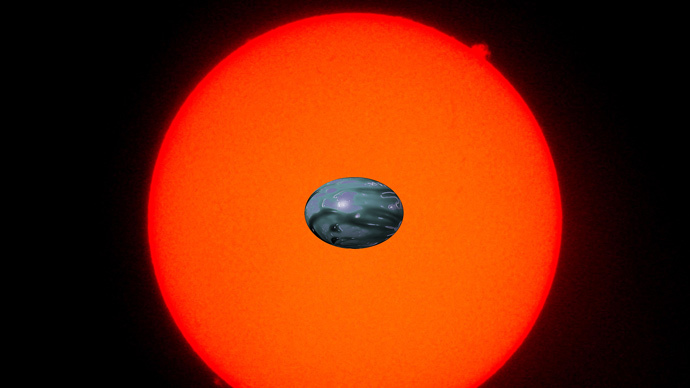Researchers open hunt for ‘stretched out’, deformed exoplanets

A team of researchers says that extremely hot exoplanet orbiting red dwarf star could be bent out of shape and stretched out by the extreme tidal forces, and that such world could be discovered by new telescopes currently in the pipeline.
The team of researchers have created a model in which a rocky-planet is located close enough to a parent red dwarf star to experience extreme tidal forces from its gravity. Their research was published in the journal Monthly Notices of the Royal Astronomical Society.
The model revealed that close-orbiting rocky planets will locked to their stars so that one side of its face always looks at its stellar companion, in the same way that the near side of the moon always faces Earth.
Scientists are already familiar with how gas giants, known as “Hot Jupiters”, orbit close to their parent stars. These worlds are known to have very high temperatures of up to 1,000 degrees Celsius and have extreme tidal forces from the stars gravity.
But in case of a rocky exoplanet, it would be bent out of shape by the gravitational pull of its parent star and therefore most likely to be inhospitable to life.
“Imagine taking a planet like the Earth or Mars, placing it near a cool red star and stretching it out. Analyzing the new shape alone will tell us a lot about the otherwise impossible to see internal structure of the planet and how it changes over time," study lead author Prabal Saxena, an astrophysicist at George Mason University, said in a statement.
The team said that new telescopes currently in production would give them a higher probability of finding these planets. NASA is currently building an $8.8 billion James Webb Space Telescope, which will launch in 2018. The Europeans are planning the ground-based European-Extremely Large Telescope (E-ELT), which is expected to start work in the mid-2020s.
Studying these out-of-shape worlds, when they are discovered, could help scientists understand the internal structure of rocky planets the team said.












